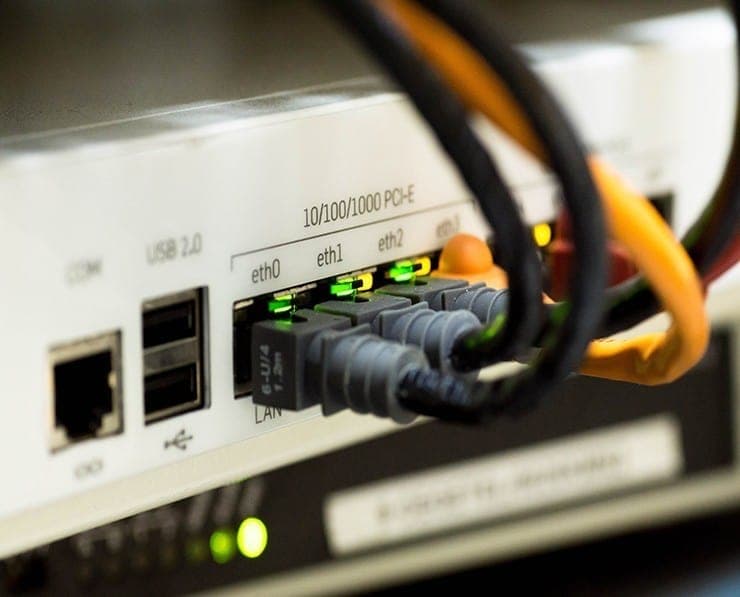Student Feedback
300-208: CCNP Security Implementing Cisco Secure Access Solutions (SISAS) Certification Video Training Course Outline
Course Introduction
Microsoft Basics For ISE Labs
Cisco ISE 1.1.4 Labs
Course Introduction
300-208: CCNP Security Implementing Cisco Secure Access Solutions (SISAS) Certification Video Training Course Info
Ultimate CCNP Security 300-208 SISAS Deep Dive Certification Training
Comprehensive SISAS 300-208 Security Course
What You Will Learn From This Course
• Gain comprehensive knowledge of Cisco CCNP Security 300-208 SISAS module
• Learn to implement and configure Cisco Identity Services Engine (ISE) in lab and real-world environments
• Understand secure access architecture using 802.1X and Cisco TrustSec
• Learn to perform endpoint profiling and posture assessment
• Implement BYOD solutions using Cisco ISE
• Configure authentication methods including Dot1x, PEAP, and MAC Authentication Bypass
• Manage dynamic VLANs and downloadable access control lists (DACLs)
• Learn web authentication methods such as Local Web Authentication (LWA) and Central Web Authentication (CWA)
• Perform ISE backup, restore, patch installation, rollback, and upgradation
• Integrate ISE with Microsoft Active Directory and LDAP sources
• Learn to troubleshoot ISE deployments and verify configurations in live lab scenarios
Learning Objectives
By the end of this part, learners will be able to:
• Describe the components and architecture of secure access solutions
• Understand the role of Cisco ISE in network security and endpoint control
• Implement secure access using 802.1X and Cisco TrustSec policies
• Configure Cisco ISE for MAC Authentication Bypass and Dot1x authentication
• Create dynamic VLAN and DACL assignments for endpoint users
• Implement PEAP-based authentication integrated with Active Directory
• Configure wired web authentication methods for secure network access
• Perform initial installation and configuration of Cisco ISE in a lab environment
• Take snapshots, manage backups, and perform restores of ISE virtual machines
• Apply patches, rollbacks, and version upgrades to maintain ISE deployments
• Verify all configurations and troubleshoot common deployment issues
Target Audience
This course is designed for:
• Network engineers seeking to enhance their security knowledge and skills
• IT professionals preparing for the Cisco CCNP Security 300-208 SISAS certification
• Security administrators responsible for endpoint control and network access solutions
• Students and professionals aiming to implement and manage Cisco ISE solutions
• Anyone interested in learning practical and hands-on Cisco security deployment
• Professionals managing enterprise networks who need to enforce secure access policies
• IT teams looking to implement BYOD, endpoint profiling, and web authentication solutions
Requirements
To get the most from this course, learners should have the following:
• Access to a lab environment with VMware Workstation or similar virtualization software
• Microsoft Server 2008 or later for Active Directory and Certificate Authority setup
• Cisco Identity Services Engine (ISE) virtual appliance files for deployment
• Networking devices for testing 802.1X, MAC Authentication Bypass, and web authentication methods
• Basic understanding of routing, switching, and network security concepts
Prerequisites
Before starting this course, learners should have:
• Knowledge of CCNA Security concepts and practices
• Familiarity with IP addressing, VLANs, and network segmentation
• Basic understanding of authentication protocols such as 802.1X and EAP
• Experience working with Active Directory and LDAP directory services
• Understanding of endpoint devices and client operating systems
• Dedication to follow lab exercises and practice real-world scenarios
Description
The Cisco CCNP Security 300-208 SISAS module focuses on implementing secure access solutions for enterprise networks. The course teaches network security engineers to deploy and manage Cisco Identity Services Engine, a critical platform for network access control and endpoint security. CISCO ISE allows organizations to define, enforce, and monitor access policies based on user roles, device types, and endpoint compliance.
The SISAS module includes a combination of theoretical knowledge and hands-on lab exercises. Learners are introduced to secure access concepts, authentication protocols, and Cisco TrustSec technology. By mastering these concepts, engineers can ensure that only authorized users and devices gain access to the network while reducing risks associated with unauthorized endpoints.
This part of the course begins with the installation and configuration of the lab environment. Students will install Microsoft Server 2008 on VMware Workstation and configure Active Directory to manage users, groups, and policies. A Certificate Authority will also be deployed to enable certificate-based authentication for endpoints. These foundational steps are essential for implementing Dot1x, PEAP, and other authentication mechanisms in Cisco ISE.
Next, learners will install Cisco ISE 1.1.4 on a virtual machine. Instructions will guide you through setting up ISE nodes, initial configuration, and taking snapshots to preserve lab progress. Understanding how to snapshot and restore virtual machines is critical for testing different configurations without losing progress or risking misconfiguration.
Once the lab is ready, students will explore the ISE web portal and configure the Identity Source Sequence. This allows ISE to query multiple sources, such as Active Directory and LDAP, for authentication and authorization. Learners will configure self-signed certificates as well as certificates issued by the Microsoft Certificate Authority to secure communication between endpoints and the ISE server.
Backup and restore operations are also covered to ensure that learners can maintain network security solutions without data loss. Patch management, rollback, and version upgrades are demonstrated to teach best practices for maintaining a production-grade deployment of Cisco ISE.
The course then moves into configuring authentication methods. Students will start with MAC Authentication Bypass (MAB), followed by Dot1x using MD5 and PEAP methods. Each configuration is paired with verification exercises to confirm that endpoints authenticate and receive proper network access. Dynamic VLAN assignments and DACLs are implemented to enforce network segmentation and security policies for different user roles.
Integration with Active Directory allows PEAP-based authentication to validate user credentials against enterprise directory services. This ensures that only authorized users gain access to network resources. Learners will also implement web authentication methods, including Local Web Authentication (LWA) and Central Web Authentication (CWA), to support guest and BYOD devices securely.
Course Modules / Sections
This course is divided into multiple modules designed to progressively build knowledge and hands-on skills for Cisco CCNP Security 300-208 SISAS. Each module focuses on a key aspect of secure access solutions, allowing learners to gradually gain expertise in deploying and managing Cisco Identity Services Engine (ISE).
The first module introduces the lab setup and initial configuration of Cisco ISE. Students will learn how to install Microsoft Server 2008 on VMware Workstation, configure Active Directory, deploy a Certificate Authority, and install Cisco ISE on virtual machines. This foundation ensures learners are prepared for advanced configurations and testing.
The second module focuses on Identity Source integration. Students will configure ISE to authenticate users against Active Directory and LDAP. This module covers Identity Source Sequences, ensuring that ISE can handle multiple authentication sources and select the appropriate method for user and device validation.
The third module dives into certificate management and endpoint registration. Learners will configure self-signed certificates and integrate ISE with Microsoft Certificate Authority to enable secure communications. This module also teaches how to register endpoints and manage certificates for authentication purposes.
The fourth module emphasizes authentication methods. MAC Authentication Bypass (MAB) is introduced first, followed by 802.1X Dot1x authentication using MD5 and PEAP. Dynamic VLAN assignments and downloadable access control lists (DACLs) are applied to enforce network segmentation based on user roles.
The fifth module explores web authentication solutions. Wired Local Web Authentication (LWA) and Central Web Authentication (CWA) are configured to support guest users and BYOD environments. This module also integrates profiling and posture assessment for endpoint compliance.
The sixth module focuses on ISE maintenance, patching, upgrades, and troubleshooting. Students learn best practices for backup and restore operations, patch installation, rollback procedures, and ISE version upgrades to ensure secure and stable deployments.
The final module is dedicated to hands-on labs and real-world scenarios. Learners combine all previously acquired skills to implement, verify, and troubleshoot ISE configurations. This module reinforces practical knowledge and prepares students for the CCNP Security 300-208 SISAS exam and professional deployment environments.
Key Topics Covered
The course covers a wide range of topics necessary for mastering Cisco ISE and secure access solutions. These topics provide both theoretical understanding and practical implementation skills.
Installation and Configuration: Learners will install VMware Workstation and deploy Microsoft Server 2008. Active Directory and Certificate Authority are configured to support authentication and certificate-based access. Cisco ISE installation on virtual machines is covered in detail, including initial setup and snapshot management.
Identity Source Integration: The course teaches integration of ISE with Active Directory and LDAP. Learners configure Identity Source Sequences to allow multiple authentication sources, ensuring seamless validation of users and devices.
Certificate Management: Students learn to configure self-signed certificates and integrate ISE with Microsoft Certificate Authority. This ensures secure communication between endpoints and ISE and allows proper certificate-based authentication.
Endpoint Authentication: MAC Authentication Bypass (MAB), Dot1x with MD5, and Dot1x with PEAP are covered in detail. Each method is configured in lab environments and verified for proper functionality. Dynamic VLANs and DACLs are applied to enforce network segmentation and access policies based on user identity and role.
Web Authentication: Wired Local Web Authentication (LWA) and Central Web Authentication (CWA) configurations are included. Profiling and posture assessment are used to evaluate endpoint compliance and assign appropriate access privileges. BYOD solutions are implemented to support a variety of devices securely.
ISE Maintenance and Troubleshooting: Backup and restore operations are covered to ensure data integrity. Patch installation, rollback procedures, and upgrades are demonstrated to maintain operational stability. Troubleshooting common configuration and deployment issues is also emphasized.
Hands-On Labs: Practical exercises throughout the course allow learners to apply concepts in a controlled environment. Lab scenarios include configuring authentication methods, dynamic VLANs, DACLs, web authentication, profiling, and posture assessment.
Exam Preparation: Concepts and configurations are aligned with the Cisco CCNP Security 300-208 SISAS exam objectives. Learners gain both theoretical knowledge and practical skills necessary to succeed in the certification exam.
Advanced Configurations: Learners explore advanced ISE features such as integration with multiple identity sources, dynamic authorization policies, endpoint profiling, BYOD solutions, and secure access policies. These configurations ensure learners are prepared for complex real-world deployments.
Teaching Methodology
The course employs a hands-on, practical approach combined with conceptual learning to ensure students gain both theoretical knowledge and real-world skills. Each module follows a structured methodology designed for maximum comprehension and skill acquisition.
Conceptual Lectures: Each topic is introduced with detailed lectures explaining the underlying concepts. Learners gain an understanding of secure access, ISE architecture, authentication protocols, and endpoint control. This conceptual foundation prepares students for lab exercises and practical implementation.
Demonstrations: Instructors demonstrate configurations step by step in virtual lab environments. This includes installing Microsoft Server, configuring Active Directory, deploying Cisco ISE, and implementing authentication methods. Demonstrations ensure learners understand the process before performing it themselves.
Hands-On Labs: Students perform configurations in virtual lab environments. Labs are designed to replicate real-world scenarios, allowing learners to practice endpoint authentication, dynamic VLAN assignment, DACL configuration, web authentication, and profiling. Each lab reinforces theoretical concepts through practical application.
Scenario-Based Exercises: Learners are given scenarios simulating enterprise network environments. They must apply knowledge to configure authentication, enforce policies, and troubleshoot issues. Scenario-based exercises enhance problem-solving skills and prepare students for professional deployments.
Step-by-Step Guides: Detailed instructions are provided for each configuration and lab exercise. Step-by-step guides ensure learners can follow along and successfully implement secure access solutions in their lab environments.
Verification and Troubleshooting: After each configuration, learners verify functionality using tools and commands. Troubleshooting exercises teach how to identify and resolve common issues, ensuring learners gain confidence in maintaining production networks.
Continuous Assessment: Instructors provide feedback during labs and exercises. Continuous assessment helps learners track progress, identify areas for improvement, and gain mastery over configurations.
Integration of Real-World Practices: The course emphasizes best practices and operational standards used by network security engineers. Learners acquire skills that are directly applicable to enterprise deployments and professional environments.
Assessment & Evaluation
Assessment is an integral part of this course to ensure learners achieve mastery of Cisco CCNP Security 300-208 SISAS concepts and practical skills. Evaluation is designed to measure both theoretical understanding and hands-on implementation capabilities.
Lab Exercises: Each module includes lab exercises that learners must complete successfully. Lab assessments evaluate the ability to configure ISE, integrate identity sources, implement authentication methods, apply dynamic VLANs and DACLs, and configure web authentication.
Configuration Verification: Learners are assessed on their ability to verify each configuration. Correct implementation and successful verification of authentication methods, dynamic VLANs, DACLs, and endpoint access determine the understanding of practical deployment skills.
Scenario-Based Evaluations: Learners are given scenarios simulating enterprise network conditions. Evaluation is based on the ability to analyze the scenario, implement appropriate ISE configurations, and troubleshoot issues effectively.
Practical Exams: Practical assessments involve end-to-end configuration tasks. Learners are evaluated on the deployment of Cisco ISE nodes, integration with Active Directory and LDAP, certificate management, authentication method implementation, and web authentication configurations.
Problem-Solving Exercises: Assessment includes problem-solving tasks where learners must identify misconfigurations, errors, or issues in a simulated network. This evaluates troubleshooting skills, critical thinking, and the ability to maintain secure access solutions.
Continuous Monitoring: Progress is monitored throughout the course. Learners receive feedback on lab exercises, scenario exercises, and practical assessments. Continuous monitoring ensures students are on track to achieve proficiency in Cisco ISE and secure access solutions.
Knowledge Checks: Periodic knowledge checks assess understanding of conceptual topics, including secure access architecture, Cisco TrustSec, authentication protocols, endpoint profiling, and policy enforcement. Knowledge checks ensure that learners retain both theoretical and practical knowledge.
Certification Readiness: Assessment is aligned with Cisco CCNP Security 300-208 SISAS exam objectives. Successful completion of lab exercises, scenario tasks, and evaluations ensures learners are well-prepared for the certification exam and real-world network deployments.
Benefits of the Course
This course provides multiple benefits for network engineers, security professionals, and IT students aiming to enhance their careers in network security. By completing this course, learners gain practical and theoretical knowledge required to implement Cisco secure access solutions effectively.
Learners will acquire hands-on experience with Cisco Identity Services Engine (ISE), learning how to deploy, configure, and troubleshoot secure access in enterprise networks. They will develop the ability to implement authentication protocols such as 802.1X, MAC Authentication Bypass (MAB), and PEAP, ensuring only authorized users and devices gain access to the network.
The course also enables learners to manage dynamic VLAN assignments and downloadable access control lists (DACLs) for network segmentation and policy enforcement. Students will understand how to integrate ISE with Active Directory and LDAP, implement web authentication solutions including Local Web Authentication (LWA) and Central Web Authentication (CWA), and manage endpoint compliance through profiling and posture assessment.
By gaining these skills, learners become proficient in deploying secure network access solutions, reducing risks associated with unauthorized access and BYOD devices. The practical lab exercises ensure that learners can implement configurations in real-world scenarios, making them valuable assets for enterprises seeking skilled network security professionals.
Additionally, the course prepares students for the Cisco CCNP Security 300-208 SISAS certification exam. Learners gain the knowledge and confidence to pass the exam, which enhances their professional credibility and opens opportunities for advanced career roles in network security and IT infrastructure management. The course also develops problem-solving and troubleshooting skills, enabling learners to identify and resolve network access issues efficiently.
Upon completion, learners can plan, implement, and maintain Cisco ISE deployments in enterprise environments. They will have the ability to enforce security policies, monitor network access, and manage endpoint compliance. This expertise provides a competitive advantage in the IT job market and supports professional growth in network security roles.
Course Duration
The Cisco CCNP Security 300-208 SISAS course is designed to provide comprehensive coverage of all topics in a structured and manageable timeline. The course typically spans a duration of 6 to 8 weeks, depending on the pace of learning and hands-on lab practice.
Each week includes a combination of theoretical lessons, demonstrations, and practical lab exercises to reinforce learning. The first week focuses on lab setup, installation of Microsoft Server 2008, Active Directory configuration, and ISE deployment. Learners gain familiarity with VMware Workstation, creating snapshots, and preparing the lab environment for advanced configurations.
Weeks two and three cover identity source integration, certificate management, and endpoint registration. Students learn to configure Active Directory and LDAP integration, implement self-signed and CA-issued certificates, and register endpoints for secure access.
Weeks four and five focus on authentication protocols, including MAC Authentication Bypass (MAB), Dot1x with MD5, and PEAP. Dynamic VLAN and DACL configuration exercises are included to reinforce policy enforcement and network segmentation concepts.
Week six emphasizes web authentication, including Local Web Authentication (LWA) and Central Web Authentication (CWA). Learners implement profiling and posture assessment to ensure endpoint compliance and BYOD readiness. Hands-on labs simulate real-world network access scenarios to enhance practical skills.
Week seven covers ISE maintenance, patch management, upgrades, and troubleshooting. Learners practice backup and restore operations, install patches, perform rollbacks, and upgrade ISE versions while maintaining operational stability. Troubleshooting exercises allow students to identify and resolve configuration and deployment issues effectively.
The final week is dedicated to comprehensive review and practice. Learners perform end-to-end configurations in the lab, integrate multiple authentication methods, verify dynamic VLANs and DACLs, and simulate real-world scenarios. This ensures readiness for professional deployments and prepares students for the CCNP Security 300-208 SISAS exam.
The total duration is flexible, allowing learners to adjust based on prior knowledge, pace of learning, and availability of lab resources. Consistent practice and engagement with hands-on labs are encouraged to maximize the benefits of the course and achieve mastery in secure access implementation.
Tools & Resources Required
ly complete this course and gain practical experience, learners require specific tools and resources for lab exercises and real-world practice.
Virtualization Platform: VMware Workstation or VMware ESXi is required to deploy Microsoft Server and Cisco ISE virtual machines. This allows learners to create isolated lab environments for hands-on practice and testing without affecting production networks.
Microsoft Server 2008 or later: Essential for setting up Active Directory and Certificate Authority. Active Directory provides the user and device database for authentication, while the Certificate Authority issues certificates for secure communications.
Cisco Identity Services Engine (ISE): Virtual appliance files for Cisco ISE versions 1.1.4, 1.4.0, and 2.0.0 are required. This enables learners to practice installation, configuration, authentication, web portal setup, policy enforcement, and endpoint profiling across multiple ISE versions.
Networking Devices: Switches and routers are recommended to simulate 802.1X authentication, MAC Authentication Bypass, and web authentication in a lab environment. These devices allow learners to implement VLANs, DACLs, and endpoint policies effectively.
Lab Guides and Documentation: Step-by-step lab guides provide instructions for installation, configuration, and troubleshooting exercises. Documentation includes configuration examples, screenshots, and verification commands to assist learners in successful implementation.
Endpoint Devices: Client devices such as laptops or virtual machines running Windows or Linux are required to test authentication, web authentication, and policy enforcement. These endpoints are used to validate lab exercises and simulate real-world scenarios.
Network Management Tools: Tools such as packet analyzers, network monitoring software, and command-line utilities are recommended to verify configurations, troubleshoot authentication issues, and monitor network traffic.
Reliable Internet Connection: An internet connection is needed for software downloads, accessing documentation, and optional online resources for additional learning and practice.
Time and Dedication: Learners must dedicate sufficient time to study course content, perform lab exercises, and practice troubleshooting scenarios. Hands-on practice is critical to gain proficiency in Cisco ISE deployment and secure access implementation.
By having these tools and resources, learners can fully engage with the course content, complete lab exercises effectively, and gain practical skills that are directly applicable in professional environments. Proper setup of these resources ensures a smooth learning experience and supports successful mastery of the Cisco CCNP Security 300-208 SISAS module.
The combination of structured learning, hands-on labs, and required tools allows learners to gain practical expertise, prepare for certification, and confidently implement secure access solutions in enterprise networks.
Career Opportunities
Completing the Cisco CCNP Security 300-208 SISAS course opens up numerous career opportunities for network security professionals, IT administrators, and enterprise engineers. The skills and knowledge gained from this course are highly valued by organizations seeking secure access solutions and endpoint control in complex network environments.
Network Security Engineer roles are one of the primary career paths after completing this course. Professionals in this role are responsible for implementing, monitoring, and managing secure access solutions, ensuring that only authorized users and devices connect to enterprise networks. Knowledge of Cisco ISE, authentication protocols, and secure access policies enables engineers to design and deploy robust security frameworks that protect critical network resources.
Security Administrators and Security Analysts can leverage the skills gained in this course to enforce network access policies, perform endpoint profiling, and monitor user activity. They are responsible for maintaining compliance, evaluating security posture, and mitigating potential threats using Cisco ISE as a central management platform. This ensures organizations meet security standards and reduces the risk of unauthorized access.
IT Managers and Network Architects benefit from understanding the deployment and management of Cisco's secure access solutions. By mastering SISAS concepts, they can oversee the integration of ISE into enterprise networks, design secure access policies, and manage BYOD solutions efficiently. This knowledge enhances decision-making and ensures optimal security configurations across network infrastructures.
The course also provides career advantages for professionals pursuing Cisco CCNP Security certification. Passing the 300-208 SISAS exam validates practical skills and theoretical knowledge in secure access solutions, increasing employability and professional credibility. Certification holders are often preferred candidates for advanced roles in cybersecurity, network security engineering, and IT infrastructure management.
Additional roles that benefit from this training include Security Consultants, who advise organizations on secure access strategies, and Enterprise Network Engineers, who design and implement network segmentation, dynamic VLANs, and DACLs. Professionals in these positions require expertise in ISE integration, authentication protocols, and endpoint control, all of which are covered extensively in this course.
Knowledge gained from this course also supports roles in compliance and regulatory management. Organizations often require secure access policies to meet regulatory standards, and professionals trained in Cisco ISE can ensure these standards are met through proper configuration, monitoring, and reporting of network access.
With a combination of hands-on lab experience, theoretical knowledge, and certification readiness, graduates of this course are prepared for both technical and managerial roles in enterprise networks. They can design, implement, maintain, and troubleshoot secure access solutions, making them valuable assets for organizations focused on cybersecurity and network integrity.
Conclusion
The Cisco CCNP Security 300-208 SISAS course provides comprehensive training in secure access solutions using Cisco Identity Services Engine. It equips learners with the knowledge and skills needed to implement, configure, and manage authentication protocols, dynamic VLANs, DACLs, web authentication methods, and endpoint compliance solutions.
Through a structured curriculum of theoretical lessons, demonstrations, and hands-on labs, learners gain both conceptual understanding and practical expertise. The course covers installation, configuration, integration with Active Directory and LDAP, certificate management, authentication methods including MAC Authentication Bypass, Dot1x, and PEAP, and web authentication using LWA and CWA. Dynamic VLANs, DACLs, profiling, posture assessment, and BYOD solutions are also thoroughly addressed.
Learners develop the ability to perform troubleshooting, backup and restore operations, patch management, and upgrades, ensuring the deployment of stable and secure network access solutions. Scenario-based exercises and practical labs provide real-world experience, preparing students for professional environments and the Cisco CCNP Security 300-208 SISAS certification exam.
The benefits of this course extend beyond certification. Graduates gain skills that are directly applicable to enterprise network security roles, including network security engineers, security administrators, IT managers, and security consultants. They can implement secure access policies, manage endpoint compliance, and maintain regulatory standards, enhancing their value to organizations and improving career prospects.
The course duration and structured modules ensure learners have ample time to master concepts, perform hands-on practice, and achieve proficiency in deploying Cisco ISE. Access to essential tools and resources, including VMware, Microsoft Server, and networking devices, allows students to replicate real-world scenarios and gain practical experience.
Overall, this course provides a complete learning pathway for individuals aiming to specialize in secure access solutions, endpoint control, and Cisco ISE deployment. By combining theoretical knowledge with practical application, learners are equipped to succeed in professional roles, contribute to organizational security, and advance their careers in network security.
Enroll Today
Enroll in the Cisco CCNP Security 300-208 SISAS course today to begin your journey toward mastering secure access solutions and Cisco Identity Services Engine. Gain the knowledge, practical skills, and certification readiness needed to advance your career in network security and enterprise IT.
This course provides structured learning, hands-on lab exercises, and real-world scenarios to ensure learners are prepared for both professional deployments and the Cisco certification exam. Take advantage of the comprehensive curriculum, expert instruction, and practical resources to develop expertise in secure access implementation, authentication protocols, dynamic VLANs, DACLs, web authentication, profiling, and BYOD solutions.
Invest in your future by acquiring skills that are in high demand across enterprises, enabling you to take on advanced network security roles and enhance your professional growth. Enroll now to start learning and become proficient in Cisco CCNP Security 300-208 SISAS, equipping yourself with the tools and knowledge to succeed in the field of network security.
This course ensures that upon completion, you are capable of deploying, configuring, and managing secure access solutions, integrating ISE with enterprise directory services, enforcing network security policies, and performing endpoint compliance monitoring. Gain confidence, hands-on expertise, and certification readiness to excel in your career.
Start your learning journey today and take the first step toward becoming a skilled network security professional, ready to tackle the challenges of enterprise secure access deployment and management.













